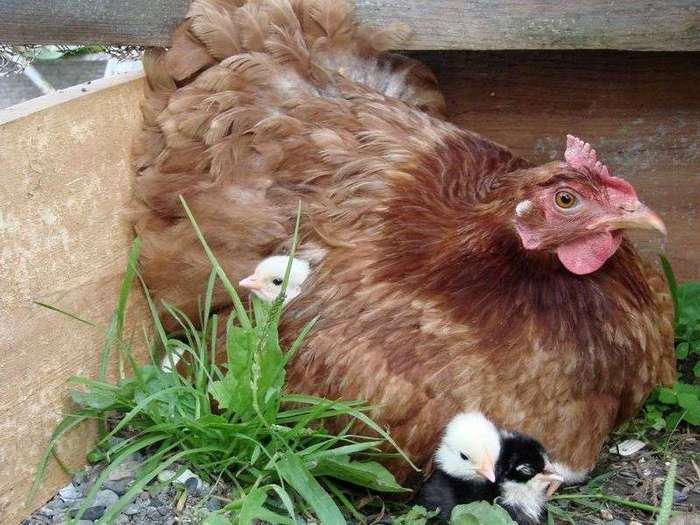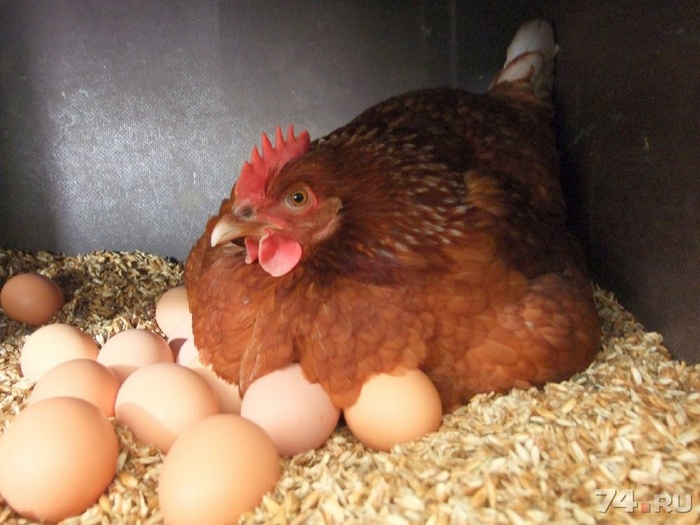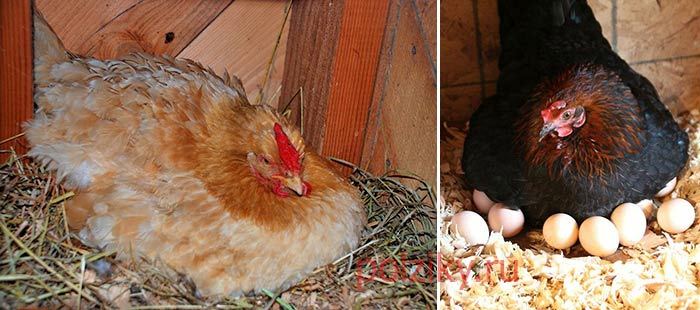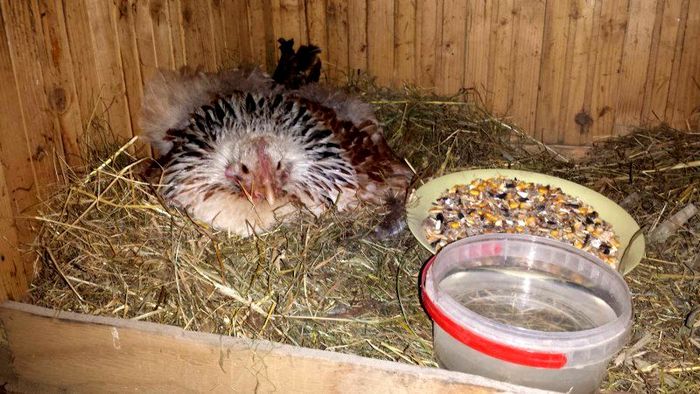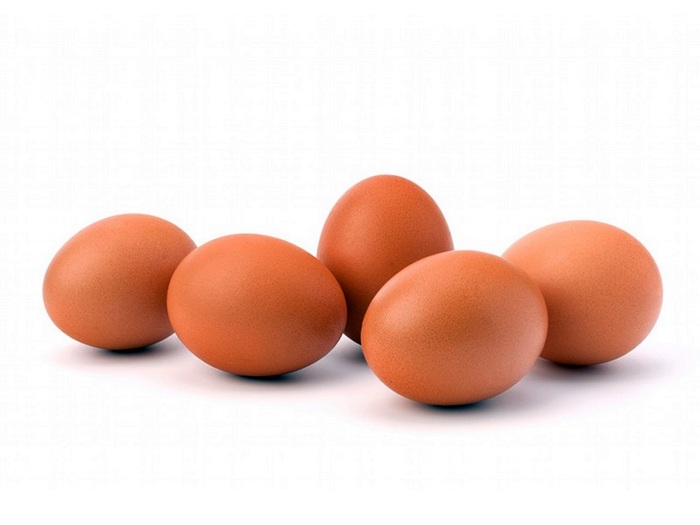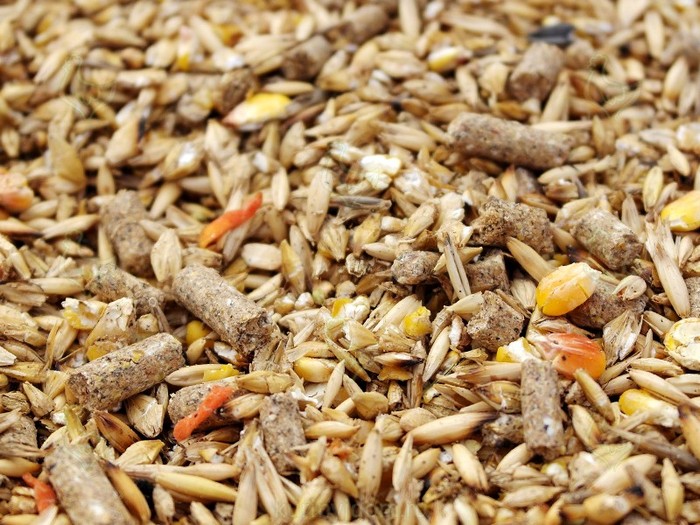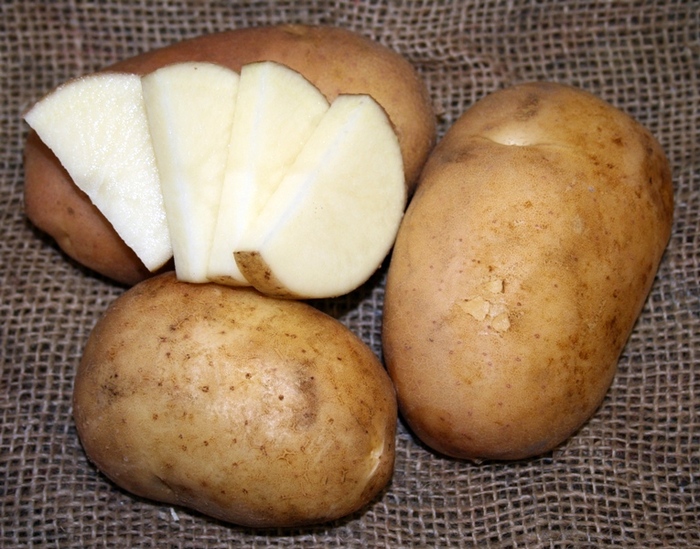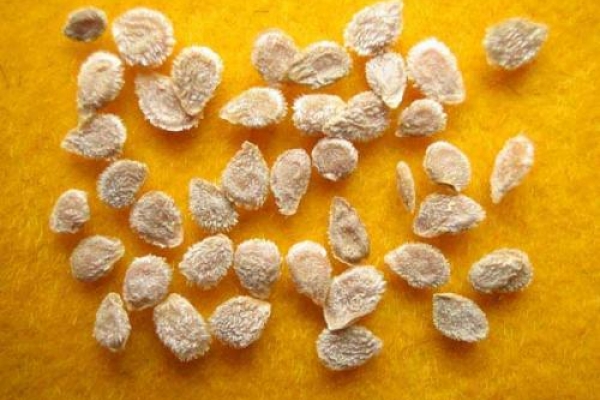Content:
Chickens are one of the most popular types of domesticated animals. The choice fell on these particular birds due to their unpretentious care and fertility. The distribution of chickens was the widest. You can meet them in almost every household.
Competent arrangement of the chicken coop will help to get a steady flow of eggs from layers. Most chickens lay 2 eggs for 3 days. Obligatory components for normal life are: a well-equipped poultry house, a spacious walking area, a balanced diet, timely cleaning of premises, and maintaining daylight hours. If all components are observed, problems with keeping chickens should not arise.
Who are hens
Not all chickens have the same attitude to the process of incubating and hatching chicks. Currently, all types of chickens are divided into 3 types according to the nature of the manifestation of the maternal instinct:
- a well-developed instinct for incubating chickens, carefully and for a long time caring for the hatched chickens;
- a weakened maternal instinct gives a starting impulse for breeding, but it soon weakens and fades away;
- the complete absence of maternal instinct makes such breeds of chickens unsuitable for raising chickens.
In the general flock, you can isolate a good laying hen based on some signs. Such individuals are distinguished by frequent clucking, they begin to equip the nest, pulling out downy feathers from themselves. In addition, the future hen may begin to collect eggs for itself from other individuals and show aggression when trying to drive it out of the nest. In addition, when choosing a quail, you should pay special attention to its health. If an individual clearly shows all the characteristic signs of readiness to incubate, but does not differ in good health, it is prohibited to use it for incubating chicks.
With a difficult choice of a particular cough, there is a method of stimulating hatching. In this case, the choice falls on those individuals who have already hatched offspring. Old chickens that no longer lay eggs are well suited for such purposes.
Among all types of chickens, several stand out according to the most productive ability for laying:
- Lohman-Brown;
- Kuchinskaya Jubilee;
- Hisex;
- High Line;
- Leghorn.
The peak activity of chickens in the process of incubating chicks occurs in the spring. Therefore, this time is considered ideal for nesting hens.
How a hen hatches eggs
Before planting eggs on eggs, a preparatory stage should be performed. Carefully choose a calm, quiet and secluded nesting location. You can install a fabric canopy so that the hen is not distracted by extraneous noise.
The nest itself should be made small, lined with turf or straw from the inside. Chickens are demanding on the size of the nest, it should not be cramped, otherwise the hen will not sit in it for the entire required period. If the nest is too large, the eggs will not lie compactly, and the quail will lose some of them. Make sure to insert the egg grooves. This will prevent them from rolling out of the nest and subsequent damage.However, the height of the sides should not be too high; when jumping into the nest from a great height, the chicken can crush the clutch. To prevent rats from ruining the nest, raise it above floor level.
It is not necessary to plant the hen on real eggs immediately after demonstrating the characteristic signs for the hen. First, it is better to install dummy copies in order to make sure that the hen is chosen correctly. If the laying hen begins to behave accordingly within a few days, then you can plant it on real eggs.
One of the main questions of novice poultry farmers is: "How many days does a hen usually hatch eggs?"
The eggs hatch until the chicks hatch, usually this period is 20 days, plus or minus 2 days. At the same time, 1-2 times a day, the hen leaves the nest for 15-20 minutes to cope with its own needs and after that continues to float the clutch.
If the chicken does not leave the place, it should be carefully removed and released for a walk. At this time, to avoid disturbing the temperature regime, the eggs should be covered with a cloth.
Based on how many days, on average, a chicken sits on eggs, you can plan to purchase daily or grown-up chickens to add to the chicken.
Selecting eggs for incubation
Choosing the right brood hen is half the battle for offspring. The correct choice of eggs is of great importance. By description:
- The eggs should be of the correct shape, even, unduly undone;
- Eggs that are too large or small are not suitable. Weak chicks hatch from small eggs, subsequently giving the same small eggs. In larger eggs, 2 yolks are often observed - with such a pathology, they are not suitable for incubation;
- The shell should be complete, without chips, build-ups or cracks;
- Eggs should be fresh, stored no more than 10 days at 15-20 ℃.
For greater control over the quality of eggs, you can conduct research with an ovoscope:
- when viewed, the chicken yolk should not turn or leak to another place when the egg is turned;
- all contents should be free of inclusions, they look like spots on the background of the shell.
Often novice poultry farmers are interested in the question: "How many eggs can a hen put under a hen?"
The choice of the number of eggs laid under the quack depends on the size of the individual, the breed. It is important to consider how many eggs you can put under the chicken. Absolutely all eggs at once should fit under the hen, being located in one layer. If there are completely uncovered ones, they should be removed. It is optimal to lay an odd number of eggs so they are evenly distributed over the nest. A maximum of 13-15 pieces can be placed under a healthy, strong bird. If you try to lay more eggs, the hen will throw out the excess itself, and they will disappear.
Interestingly, chickens can also hatch goose, duck, indoor and turkey eggs.
Egg hatching time
How long does a chicken sit on eggs? On average, the period for incubating eggs at home is 3 weeks. From day 19, you should carefully monitor the nest. Chicks may hatch at different times. Only hatched chicks can be transplanted separately from the hen only after complete drying. Until the last chick hatches, it is better to keep the brood apart from the hen at a temperature of 28-30 ℃. After complete elimination, you can move them back to the chicken.
How to feed a hen
In the process of incubating eggs, a decrease in appetite is noted in chickens. Poorly fed chickens can become emaciated. To avoid this, you should adhere to the following rules:
- the proportion of cereals high in protein and fat should be increased;
- obligatory daily introduction of vitamin and mineral complexes;
- the frequency of feeding should not be less than 2 times a day;
- there must always be access to clean water.
Tips and tricks from experienced poultry farmers
It is known how many days a hen incubates eggs. Normally, the terms are from 19 to 25 days. There are times when no hatching is observed on the 21st day. Therefore, you should not worry ahead of time. If there is still no progress by the 25th day, the eggs can already be disposed of.
If the eggs are laid in the incubator, then on the 19th day you can spray them with warm water to soften the shell.
You can start adding chicks from another layer from the 2nd day. It is better to choose chicks that differ in age by no more than 2-3 days. It is necessary to calculate that all additional chickens fit under the chicken's wings. The maximum for quality rearing is 25 chicks per blackbird.
If the laying hen has recently sat down to hatch eggs, you can leave 5-7 eggs and plant 3-4 chicks per night. After a day, you can plant all the rest.
If the bird is restless, it is better to plant in the evening, while the bird is sleepy. In the morning she will accept the chickens as her own.
When comparing hatchlings to hatched hens, offspring less susceptible to disease is noted. At the same time, a longer time of caring for offspring is typical for nests with fewer chickens.
Summing up, we can say that the process of breeding your chicks is very interesting and exciting. However, there are certain points that require special attention from the breeder. These include careful preparation of the nest, monitoring the behavior of future hens, and maintaining a balanced diet. Chickens with aggressive behavior should be excluded from applicants for hovering. Young chicks may begin to peck new chicks. Preference should be given to already adult nestlings who are not capable of laying eggs on their own. You should pay attention to the moment of planting other people's chicks under the redneck. Observing all the prescribed conditions, you can get a brood of healthy chicks.
